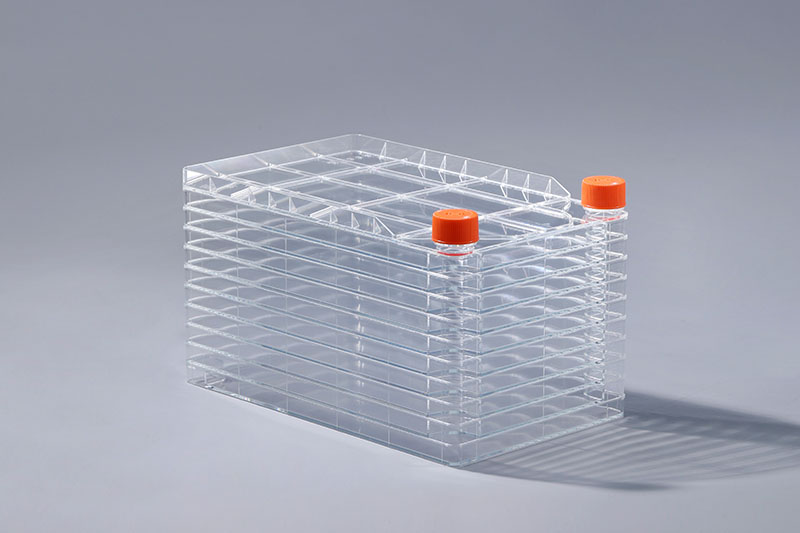Cell factories are a type of consumables that are widely used in large-scale cell culture. Cells are very fragile organisms. The in vitro culture of cells requires a specific environment, of which sterility is the basic requirement.
In vivo, the detoxification system and immune system can resist the invasion of microorganisms or other harmful substances, but in the process of in vitro culture, cells lack the protection of the body's immune system and lose the ability to defend against microorganisms and detoxify harmful substances. To ensure that cells can grow and reproduce in vitro, it is necessary to ensure a sterile work area, good personal hygiene, sterile reagents and media, and aseptic handling.
Common microbial contaminations in cell factory culture include mycoplasma, bacteria, and fungi. Mycoplasma has no lethal toxicity, can coexist with cells for a long time, and has potential effects on cells, but it is small in size and difficult to identify. It can be detected by means of lichen red or Hoechst33342 staining. Bacteria proliferate quickly, can multiply in a large amount in a short time, and produce toxins to kill cells. There are many kinds of fungi, which are visible to the naked eye, floating on the surface of the culture medium, and can be filamentous, tubular or dendritic.
If bacterial contamination occurs in the cells in the cell factory, the source of contamination should be analyzed according to the specific situation, and then the treatment should be carried out according to the contamination situation. If the contamination is very serious, it is recommended to discard the culture and re-cultivate it.
The FAI climbed 5.9 percent year-on-year in the first 11 months of 2018, quickening from the 5.7-percent growth in Jan-Oct, the National Bureau of Statistics (NBS) said Friday in an online statement.
The key indicator of investment, dubbed a major growth driver, hit the bottom in August and has since started to rebound steadily.
In the face of emerging economic challenges home and abroad, China has stepped up efforts to stabilize investment, in particular rolling out measures to motivate private investors and channel funds into infrastructure.
Friday's data showed private investment, accounting for more than 60 percent of the total FAI, expanded by a brisk 8.7 percent.
NBS spokesperson Mao Shengyong said funds into weak economic links registered rapid increases as investment in environmental protection and agriculture jumped 42 percent and 12.5 percent respectively, much faster than the average.
In breakdown, investment in high-tech and equipment manufacturing remained vigorous with 16.1-percent and 11.6-percent increases respectively in the first 11 months. Infrastructure investment gained 3.7 percent, staying flat. Investment in property development rose 9.7 percent, also unchanged.
 English
English



















































